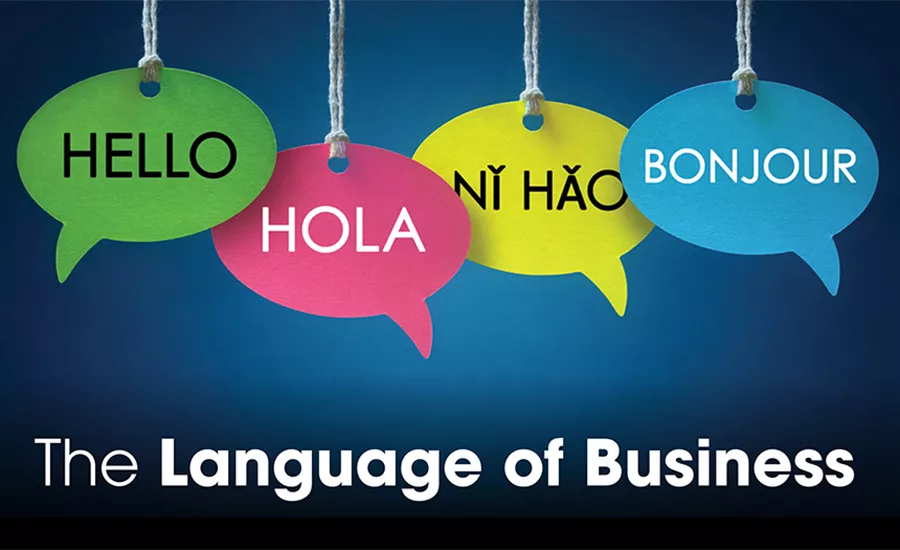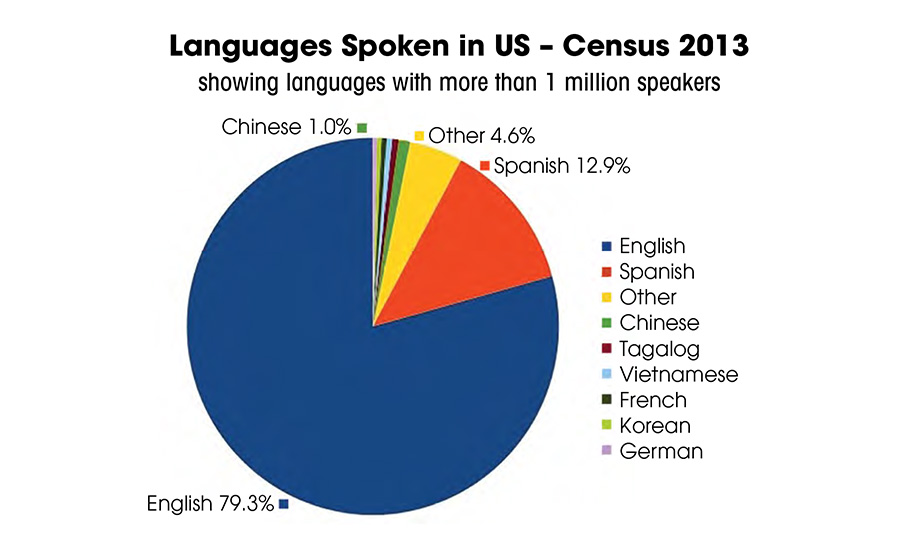The Language of Business

Image from BrianAJackson/ iStock / Getty Images Plus via Getty Images
Have you ever traveled abroad to a non-English speaking country? If you weren’t familiar with the language spoken there, doubtless you found it a little frustrating trying to accomplish even simple business transactions. You might not have purchased certain items or even seen some parts of the country due to the exasperation you felt trying to communicate. Now imagine living there full-time and the challenges you would face.
There are many who live in this country who confront this issue daily. No matter where you reside in the United States, you’ve no doubt observed the increase of foreign language speaking people in your area. Spanish is, by far, the most spoken non-English language in the U.S. with more than 37 million speakers. But there are also 20 million others who speak different languages. The latest census figures aren’t available yet, but the chart below gives you an idea of the wide variety spoken, and the numbers are only continuing to rise. And just like everyone else, one day they too may need your services.
To communicate with foreign language speakers, some contractors hire people who are bilingual. But you may have trouble finding someone who is both a linguist and has the skill sets required for your business. And where you live, there may be multiple foreign language groups. How can you communicate with them all?
One option is to learn the foreign tongue that’s most common in your area. This takes time and effort but can be well worth it if you regularly run into potential clients who speak a certain language, because as Nelson Mandela said, “If you talk to a man in a language he understands, that goes to his head. If you talk to him in his language, that goes to his heart.” But if you’re unable to go that route, then here are some suggestions:
- Have your marketing materials translated. Everyone is more receptive to information received in their own language. But have it done by professionals who understand the language, because some colors, images, or turns of phrase appeal to some nationalities and some are insulting.
- Slow down and don’t shout. Some customers may have a rudimentary understanding of English, so speak slowly and use simple words to convey your information. But they’re not deaf and shouting at them will not make you any easier to understand. If fact by doing so, you may even scare them off.
- Create a job check-off list. Once you land a job with a customer who doesn’t speak English, give them an explanatory sheet that’s been translated to their language that describes the services you’ll be performing. If the job has many facets, you can show them on their copy what you’ll be doing next and why.
- We all like to watch. Have the videos you use on your website for marketing and testimonials produced with a voice-over in the language or languages of those who live near you.
- Use a part-time translator. If you run into foreign speaking customers only occasionally, make prearrangements with an interpreter that will agree to work for you on a temporary basis.

Courtesy: U.S. Census Bureau
Working with foreign language customers can be a challenge. But if you become known in their community as a contractor that is friendly and helpful and who goes out of their way to communicate with them, it will help to increase your circle of influence and the resulting positive word of mouth can end up opening the door to a lot of future business and good will.
Looking for a reprint of this article?
From high-res PDFs to custom plaques, order your copy today!







